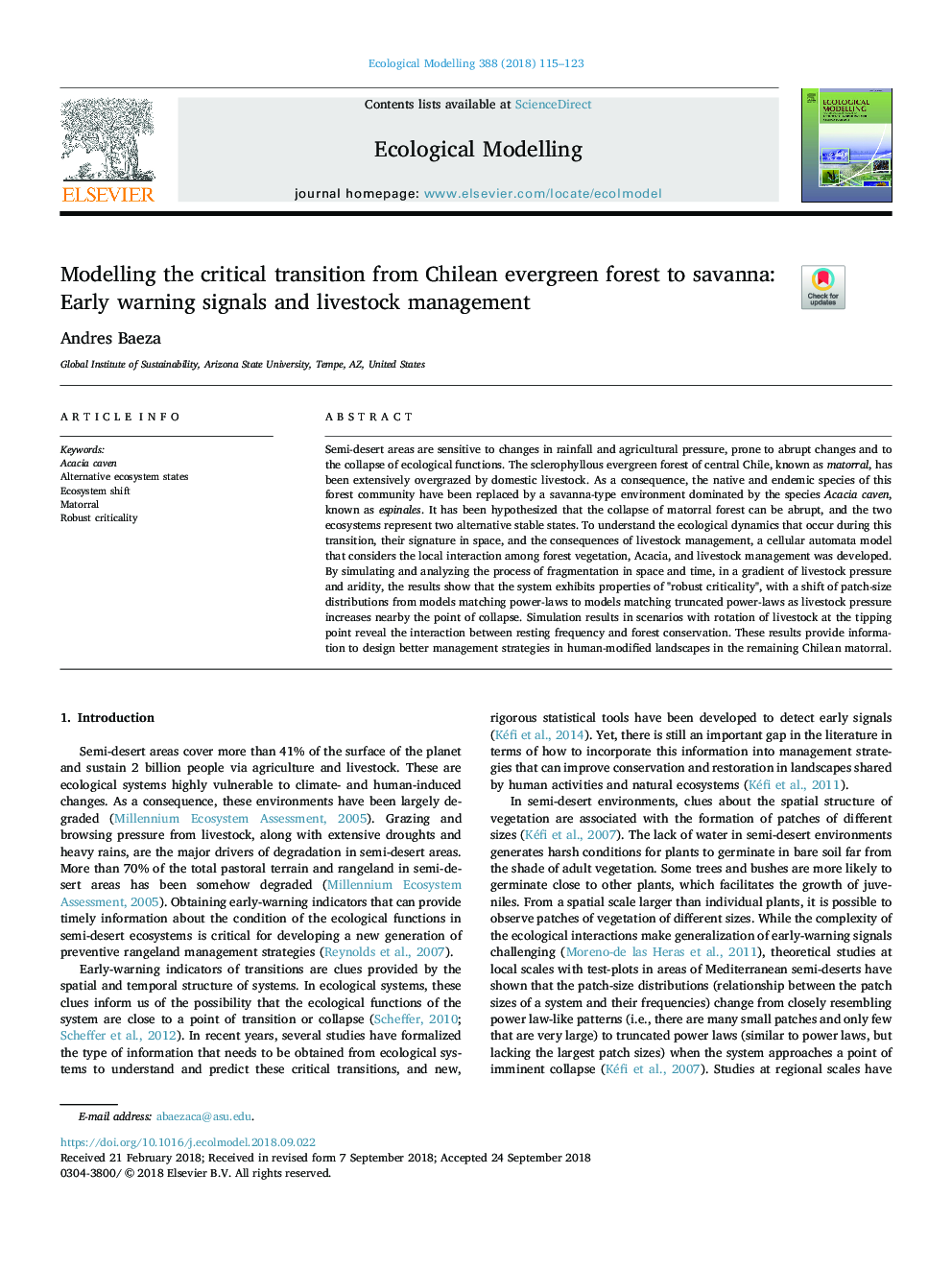| Article ID | Journal | Published Year | Pages | File Type |
|---|---|---|---|---|
| 11263308 | Ecological Modelling | 2018 | 9 Pages |
Abstract
Semi-desert areas are sensitive to changes in rainfall and agricultural pressure, prone to abrupt changes and to the collapse of ecological functions. The sclerophyllous evergreen forest of central Chile, known as matorral, has been extensively overgrazed by domestic livestock. As a consequence, the native and endemic species of this forest community have been replaced by a savanna-type environment dominated by the species Acacia caven, known as espinales. It has been hypothesized that the collapse of matorral forest can be abrupt, and the two ecosystems represent two alternative stable states. To understand the ecological dynamics that occur during this transition, their signature in space, and the consequences of livestock management, a cellular automata model that considers the local interaction among forest vegetation, Acacia, and livestock management was developed. By simulating and analyzing the process of fragmentation in space and time, in a gradient of livestock pressure and aridity, the results show that the system exhibits properties of "robust criticality", with a shift of patch-size distributions from models matching power-laws to models matching truncated power-laws as livestock pressure increases nearby the point of collapse. Simulation results in scenarios with rotation of livestock at the tipping point reveal the interaction between resting frequency and forest conservation. These results provide information to design better management strategies in human-modified landscapes in the remaining Chilean matorral.
Keywords
Related Topics
Life Sciences
Agricultural and Biological Sciences
Ecology, Evolution, Behavior and Systematics
Authors
Andres Baeza,
